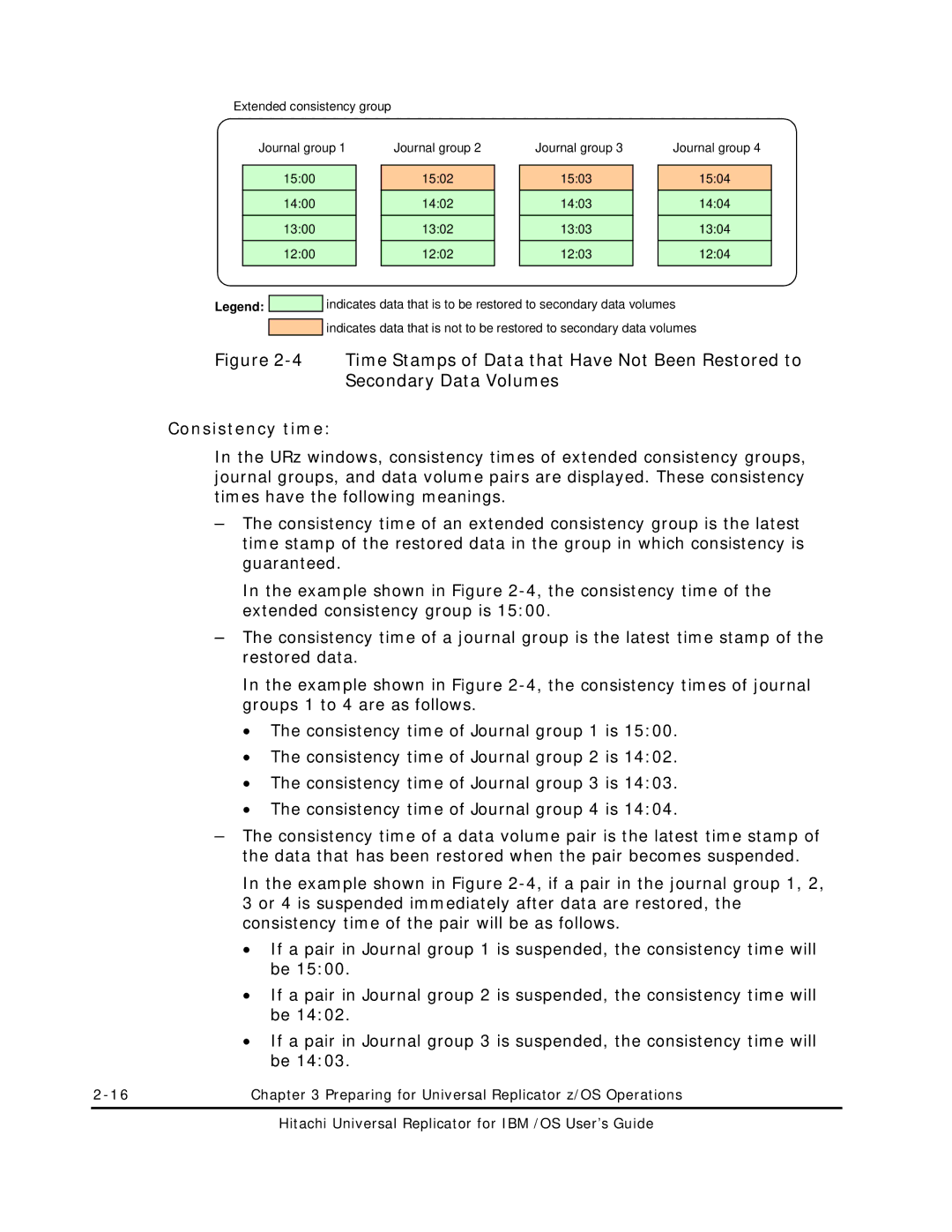
Extended consistency group |
| |||
| Journal group 1 | Journal group 2 | ||
|
|
|
|
|
| 15:00 |
|
| 15:02 |
| 14:00 |
|
| 14:02 |
| 13:00 |
|
| 13:02 |
| 12:00 |
|
| 12:02 |
|
|
|
|
|
Journal group 3
15:03
14:03
13:03
12:03
Journal group 4
15:04
14:04
13:04
12:04
Legend: ![]()
![]() indicates data that is to be restored to secondary data volumes
indicates data that is to be restored to secondary data volumes ![]()
![]() indicates data that is not to be restored to secondary data volumes
indicates data that is not to be restored to secondary data volumes
Figure 2-4 Time Stamps of Data that Have Not Been Restored to Secondary Data Volumes
Consistency time:
In the URz windows, consistency times of extended consistency groups, journal groups, and data volume pairs are displayed. These consistency times have the following meanings.
–The consistency time of an extended consistency group is the latest time stamp of the restored data in the group in which consistency is guaranteed.
In the example shown in Figure
–The consistency time of a journal group is the latest time stamp of the restored data.
In the example shown in Figure
•The consistency time of Journal group 1 is 15:00.
•The consistency time of Journal group 2 is 14:02.
•The consistency time of Journal group 3 is 14:03.
•The consistency time of Journal group 4 is 14:04.
–The consistency time of a data volume pair is the latest time stamp of the data that has been restored when the pair becomes suspended.
In the example shown in Figure
•If a pair in Journal group 1 is suspended, the consistency time will be 15:00.
•If a pair in Journal group 2 is suspended, the consistency time will be 14:02.
•If a pair in Journal group 3 is suspended, the consistency time will be 14:03.
Chapter 3 Preparing for Universal Replicator z/OS Operations |
